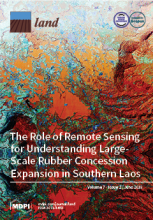Land Library
Welcome to the Land Portal Library. Explore our vast collection of open-access resources (over 74,000) including reports, journal articles, research papers, peer-reviewed publications, legal documents, videos and much more.
/ library resources
Showing items 1 through 9 of 16.Due to industrial civilization, the decline of the countryside has become a global phenomenon. Spain is a good example that reflects this issue in the rural areas of the European Union because more than half of all municipalities in the country are at risk of extinction.
This case study from Stockholm County, Sweden, explores practitioners’ experiences of barriers and bridges in municipal planning practices to support actions for ecosystem services.
United Nations Educational Scientific and Cultural Organization (UNESCO) Biosphere Reserves strive for a harmonious interaction between humans and nature.
Agricultural land is a limited natural resource with increasing economic value.
This article evaluates the impacts of land ownership on the economic performance and viability of rice farming in Thailand, and explores whether they are heterogeneous across different types of farming while using the propensity score matching (PSM) technique.
The ownership of agricultural land has important implications for food systems, the environment, farmer livelihoods, and rural economies, communities, and landscapes.
Humanitarian and development organizations working in conflict-affected settings have a particular responsibility to do no harm and contribute to the wellbeing of the population without bias.
Land-use planning (LUP), an instrument of land governance, is often employed to protect land and humans against natural and human-induced hazards, strengthen the resilience of land systems, and secure their sustainability.
Statutory recognition of rural communities as collective owners of their lands is substantial, expanding, and an increasingly accepted element of property relations.








